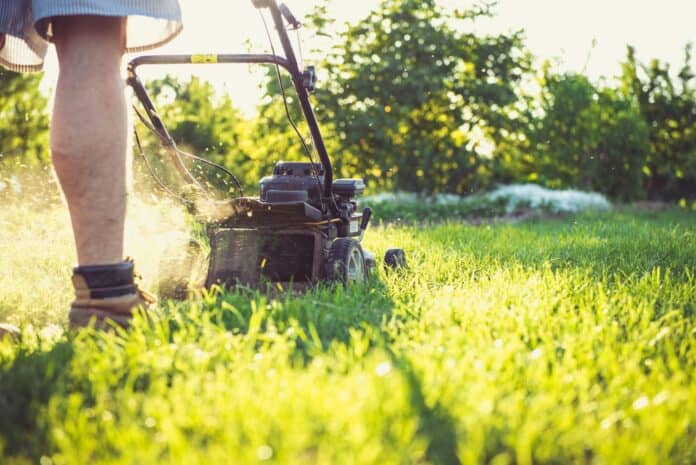With spring seemingly here to stay, Virginia gardeners and lawn care enthusiasts are looking forward to the revival of their lawns after a particularly cold winter.
While many have their own spring lawn maintenance routines, there are many practices that are untested or outright misconceptions. Mike Goatley, Virginia Cooperative Extension turfgrass specialist and professor in Virginia Tech’s School of Plant and Environmental sciences, offers some scientifically proven tips to get the healthiest lawn possible.
Virginians may be tempted to boost their lawn’s green hue with an application of fertilizer, but too much fertilizer in the spring can be detrimental to the health of your grass.
“Always start with a soil test,” Goatley said. “If you haven’t performed a soil test on your lawn within the last three years, we recommend you work with your Virginia Cooperative Extension office or a private lab to have your soil tested. A soil test will indicate if you need to apply lime or other nutrients.”
A small amount of spring nitrogen can help jump-start growth, but applying too much will encourage foliage growth at the expense of the grass’s root system, and that can be a problem once summer heat and drought set in.
“For cool-season grasses like Kentucky bluegrass or fescues, we recommend people apply no more than 1 pound per thousand square feet for the spring season,” Goatley said. “Ideally, that application would be split up, so you might apply a half-pound and then a few weeks later, another half-pound per thousand square feet.”
The biggest spring concern for warm-season grasses, like zoysia grass, is being too aggressive with nitrogen fertilization to encourage spring greening while there is still the risk of a late frost. Gardeners should wait to make the nitrogen application after frost potential has passed so that the plant has not expended all its stored energy for producing new leaves and shoots on repairing frost damage. For more information on warm season grasses, see the Virginia Cooperative Extension publication “Spring Planting Considerations for Warm-season Turfgrasses in Virginia Lawns”
Other spring lawn care concerns
- When to apply fertilizer: The ideal time to apply fertilizer is right before a light rain of a quarter-inch to half-inch, not before a heavy downpour that will wash the fertilizer away. Gardeners should be careful to sweep any excess fertilizer on sidewalks or driveways back into the turf. Spring applications of fertilizer can be made as you start to think about mowing, in mid-March to mid-May.
- Spring seeding: Though the ideal time for establishing cool-season grasses is the fall, over seeding, spot seeding, and even full-lawn establishment are possible to do in spring. Summer heat is more likely to stress newly established cool-season grass, so gardeners must provide adequate irrigation and weed control through hot summer months.
- Mowing: Begin a regular mowing program that only removes one-third of the leaf blade at a time. For cool-season grasses, as temperatures warm, plan to raise the cutting height of your mower. Goatley suggests Memorial Day as a target for raising mowing height for cool-season lawns closer to 3 inches. Choose an appropriate maintenance mowing height for the warm-season grass that meets the needs of the grass and your mowing capabilities by applying the information in the publication “Mow Like a Pro.”
- Herbicide: Spring applications of a pre-emergent herbicide should be made around the time forsythia begins blooming, so April is too late for most parts of the commonwealth. Be particularly careful with sprayable formulations of broadleaf herbicides now because of the increased potential that drift can harm the new, very sensitive growth of your ornamental plants.
With the informed recommendation provided by a soil test and a little patience as grass begins to grow, gardeners can set the foundation now for a lush summer lawn.
For additional information on lawn maintenance:
- Maintenance Calendar for Warm-Season Turfgrasses in Virginia
- Maintenance Calendar for Cool-Season Turfgrasses in Virginia
About Goatley
Mike Goatley is Virginia’s Turfgrass Extension Specialist with more than 30 years of experience helping the public establish and maintain beautiful lawns. He leads the turfgrass cultivar evaluation program at Virginia Tech and is involved in research projects that optimize the potential to have a great looking, healthy lawn through management programs that promote environmental stewardship.
By Devon Johnson and Christie Culliton

